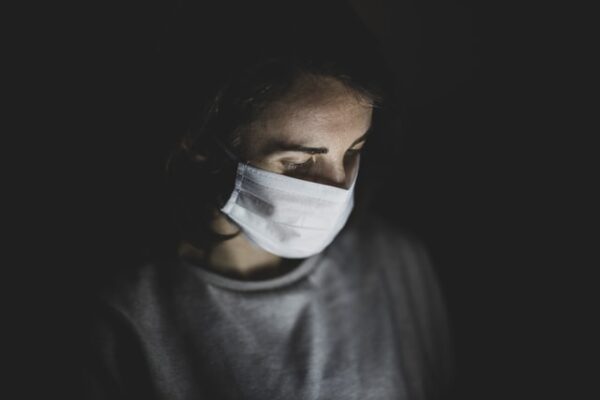
These are unprecedented times – still. We are doing everything we did before and much, much more. Speaking for myself, much of my spare time is spent counseling students through their struggles. I spend every break between classes sanitizing desks and offering masks to students who have lost theirs in transit. I use my planning time to design increasingly flexible curricula and take-home assignments for students who are quarantined. While my students work independently, I sneak in time to study assessment data to identify their increasing needs. I leave work emotionally drained and physically exhausted every day. This is the hardest year of my career.
And then there are the tests. We are testing more than we ever did before. We are mandated to give diagnostic tests to our students periodically; plus they are taking the Smarter Balanced assessment and other state-required tests twice this year. In my classroom, we are going to lose four days of learning to unrelated assessments within the first six weeks of school!
And how does that help the students…or the teachers?
Don’t misunderstand. I am very concerned about assessing my students, and I love having reliable data. But, more importantly, I am concerned about burned-out teachers and over-tested kids. We may instinctively know what to do to help a kid, but no one is instinctively testing them more.
The problem is obvious. It is a stressful time and we all need more support. The kids need it. The hard-working staff of every school needs it. If educators are going to have more tasks and more worries, our communities will need to provide more support to school staff. Are we eating? Are we sleeping enough? Are we working when we don’t feel well due to the sub shortage? Have we stopped doing our job as well as we once did?
As we go through this time, keeping our kids engaged, curious, smiling, and laughing, let’s put out the call:
Educators need support, too.
The emotional fatigue is real. If we are not getting this support from our communities, then we need to step up and support one another. To be there for kids, we need to be there.
Let me know how you are doing in the comments. Let’s offer up some support to all of those exhausted educators out there.
Meanwhile, some links for your consideration:
Concerned about the extra tests? Here is the ACADEMIC AND STUDENT WELL-BEING RECOVERY PLAN: PLANNING GUIDE 2021 from OSPI.
Here is a nice Edutopia article about what students need this year: What Students Will Need as the Year Begins
This is a Washington Post article that is action-oriented on this subject: Teacher: 10 things school districts should do right now
And the Guardian really takes it to a dark place: ‘Exhausted and underpaid’: teachers across the US are leaving their jobs in numbers

I definitely resonate with this on so many levels. One of my students comes to me after class, and during flex time, to show me the Twitter threads and screen grabs of his favorite video games. I have no idea how he identified me as his listener (I have zero skills or interest in any video games and he’d been fairly quiet in class until he showed me his phone) but it’s clear he gains so much joy from being heard.
I also keep my room stocked granola bars this year and the amount of students who have come to rely on those little snacks (we’re talking generic Costco here, nothing fancy!) is really astonishing.
I take pride in being a truly safe space for my students, and the care they need from us has never been more apparent.
Here’s one more item to add to the list of problems teachers face–crumbling infrastructure. My class is the only one in the school that had to go into quarantine due to me and so many of my students catching Covid. My class is also the one class in the school out in a portable (from the 1980s). I have serious questions about the HVAC in our room. (And the quality of the water in our room too, but that’s another issue.)
I support so many of the ideas offered by the Washington Post article. And I’m sad to see the “stick the nose to the grindstone” tone of the OSPI tome.
Yes, and Shari is right as well: it is brutal and unsustainable. And honestly, if it were “just” a global pandemic it would feel more manageable. Instead, it is that plus anti-mask protesters shouting down the school board and anti-equity community members who’ve adopted “CRT” as their boogeyman du jour without realty knowing what it means, and the teetering fragility of democracy, and the rest of the iceberg this ship of state has careened headlong into.
Why do we as educators feel like we have to shoulder it all? It is a tall order to continue being the buoy, the life raft, for kids (especially as teachers are once more the villains in local school board races and on NextDoor parent group threads.)
What will the broken system do when there are no more hard working teachers who can be cogs in the machine because we’ve burnt out and left…and there is no one in their right mind wanting to take on this job?
Mark,
I think you hit all the points I edited out of the original post! I don’t even know how to stay positive about it this year. Burn out is a real danger for us all.
You nailed it. This is the walk we’re all on right now. It’s brutal and it’s unsustainable. I keep trying to find solutions but it often feels like the real solutions are systems based and outside of the local teacher control.
You used the best word- unsustainable. I don’t know where this train is headed, but I’m getting pretty worried that it isn’t going to end well.